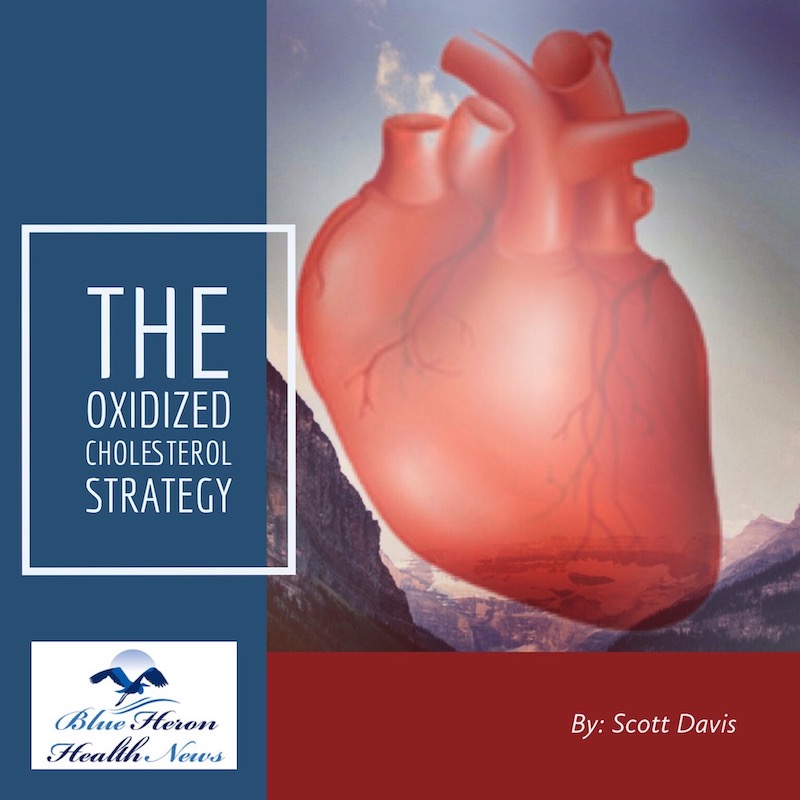
The Oxidized Cholesterol Strategy By Scott Davis is a well-researched program that reveals little known secret on how to tackle cholesterol plaque. This program will tell you step by step instructions on what you need to completely clean plaque buildup in your arteries so as to drop your cholesterol to healthy level. It also helps to enhance your mental and physical energy to hence boosting your productivity.
What is the relationship between oxidized cholesterol and LDL (low-density lipoprotein)?
The relationship between oxidized cholesterol and low-density lipoprotein (LDL) is crucial in understanding the development of atherosclerosis and related cardiovascular diseases. LDL is a type of lipoprotein responsible for transporting cholesterol, triglycerides, and other lipids through the bloodstream. Oxidized cholesterol, particularly oxidized LDL (ox-LDL), is a modified form of LDL that has undergone oxidation, which significantly alters its role and impact on health.
Key Aspects of the Relationship Between Oxidized Cholesterol and LDL:
1. Role of LDL Cholesterol:
- Cholesterol Transport: LDL’s primary function is to carry cholesterol from the liver, where it is produced or processed, to cells throughout the body, where it is used for various functions, including the formation of cell membranes, production of hormones, and synthesis of vitamin D.
- “Bad” Cholesterol: LDL is often referred to as “bad” cholesterol because high levels of LDL in the blood can lead to the accumulation of cholesterol in the walls of arteries, forming plaques that narrow and harden the arteries (atherosclerosis).
2. Oxidation of LDL Cholesterol:
- Formation of Oxidized LDL: LDL particles can undergo oxidation when they interact with free radicals—unstable molecules generated by various processes, such as smoking, pollution, and inflammation. The oxidation process primarily affects the polyunsaturated fatty acids in the LDL particle’s phospholipid layer and can also modify the apolipoprotein B (ApoB) component of LDL.
- Increased Atherogenicity: Once LDL is oxidized, it becomes more atherogenic (capable of promoting atherosclerosis) compared to native LDL. This is because oxidized LDL is more likely to contribute to endothelial damage, inflammation, and plaque formation in the arteries.
3. Endothelial Damage and Dysfunction:
- Endothelial Dysfunction: Oxidized LDL is particularly harmful to the endothelial cells that line the inner walls of blood vessels. It can cause direct damage to these cells, leading to increased permeability of the endothelium and making it easier for lipids and inflammatory cells to enter the arterial wall.
- Initiation of Atherosclerosis: The damage caused by oxidized LDL to the endothelium is one of the earliest steps in the development of atherosclerosis. This dysfunction sets the stage for further lipid accumulation and inflammation within the arterial wall.
4. Inflammatory Response and Foam Cell Formation:
- Macrophage Uptake: The immune system recognizes oxidized LDL as abnormal and harmful. Macrophages, a type of white blood cell, are recruited to the site of endothelial damage to engulf and digest oxidized LDL particles. However, unlike native LDL, oxidized LDL is taken up by macrophages through scavenger receptors, not the standard LDL receptors.
- Formation of Foam Cells: When macrophages ingest large amounts of oxidized LDL, they transform into foam cells, which are lipid-laden cells that accumulate within the arterial walls. Foam cells are a hallmark of early atherosclerotic lesions, known as fatty streaks.
5. Atherosclerotic Plaque Development:
- Plaque Growth: As foam cells accumulate, they contribute to the development of atherosclerotic plaques, which consist of lipid cores, smooth muscle cells, extracellular matrix components, and calcified deposits. These plaques thicken the arterial walls and narrow the arteries, restricting blood flow.
- Plaque Instability: Oxidized LDL plays a key role in making these plaques unstable. Unstable plaques are more prone to rupture, which can lead to the formation of a blood clot (thrombus) and potentially cause a heart attack or stroke.
6. Chronic Inflammation and Cardiovascular Risk:
- Sustained Inflammation: Oxidized LDL promotes a chronic inflammatory response in the arterial walls. This ongoing inflammation not only accelerates plaque growth but also contributes to plaque instability, increasing the risk of acute cardiovascular events.
- Increased Cardiovascular Risk: Elevated levels of oxidized LDL are strongly associated with a higher risk of cardiovascular diseases, including coronary artery disease, heart attacks, and strokes. Managing oxidized LDL is crucial for reducing this risk.
Conclusion:
The relationship between oxidized cholesterol and LDL is fundamental to the development of atherosclerosis and cardiovascular disease. LDL serves as the carrier of cholesterol in the blood, and when LDL becomes oxidized, it transforms from a necessary component of cholesterol transport to a harmful agent that drives the progression of atherosclerosis. Oxidized LDL is more likely to cause endothelial damage, promote inflammation, and lead to the formation of unstable atherosclerotic plaques, all of which significantly increase the risk of cardiovascular events. Therefore, reducing LDL oxidation through lifestyle changes, dietary adjustments, and medical interventions is key to protecting cardiovascular health.

The Oxidized Cholesterol Strategy By Scott Davis is a well-researched program that reveals little known secret on how to tackle cholesterol plaque. This program will tell you step by step instructions on what you need to completely clean plaque buildup in your arteries so as to drop your cholesterol to healthy level. It also helps to enhance your mental and physical energy to hence boosting your productivity.